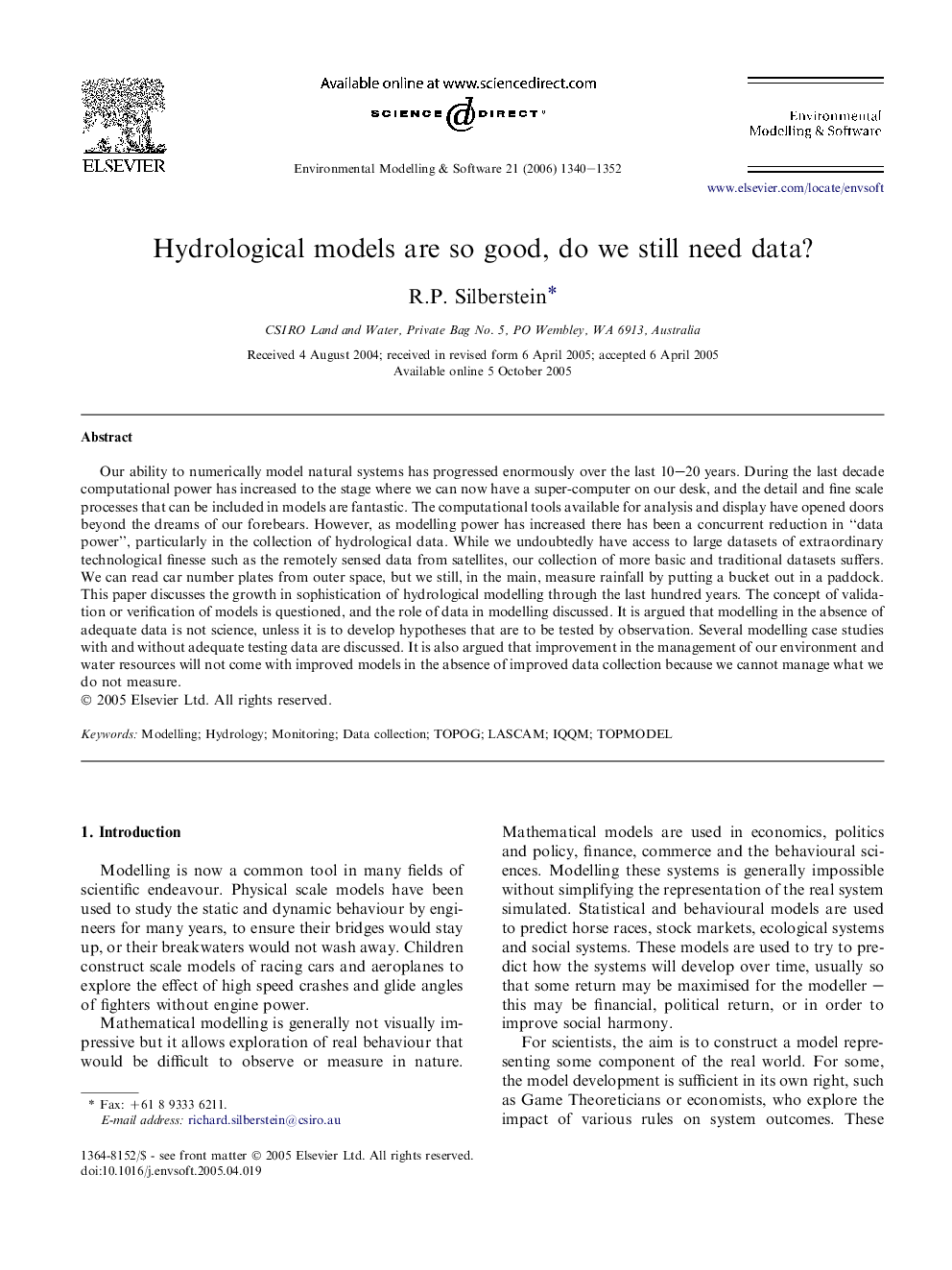| Article ID | Journal | Published Year | Pages | File Type |
|---|---|---|---|---|
| 569211 | Environmental Modelling & Software | 2006 | 13 Pages |
Our ability to numerically model natural systems has progressed enormously over the last 10–20 years. During the last decade computational power has increased to the stage where we can now have a super-computer on our desk, and the detail and fine scale processes that can be included in models are fantastic. The computational tools available for analysis and display have opened doors beyond the dreams of our forebears. However, as modelling power has increased there has been a concurrent reduction in “data power”, particularly in the collection of hydrological data. While we undoubtedly have access to large datasets of extraordinary technological finesse such as the remotely sensed data from satellites, our collection of more basic and traditional datasets suffers. We can read car number plates from outer space, but we still, in the main, measure rainfall by putting a bucket out in a paddock. This paper discusses the growth in sophistication of hydrological modelling through the last hundred years. The concept of validation or verification of models is questioned, and the role of data in modelling discussed. It is argued that modelling in the absence of adequate data is not science, unless it is to develop hypotheses that are to be tested by observation. Several modelling case studies with and without adequate testing data are discussed. It is also argued that improvement in the management of our environment and water resources will not come with improved models in the absence of improved data collection because we cannot manage what we do not measure.
